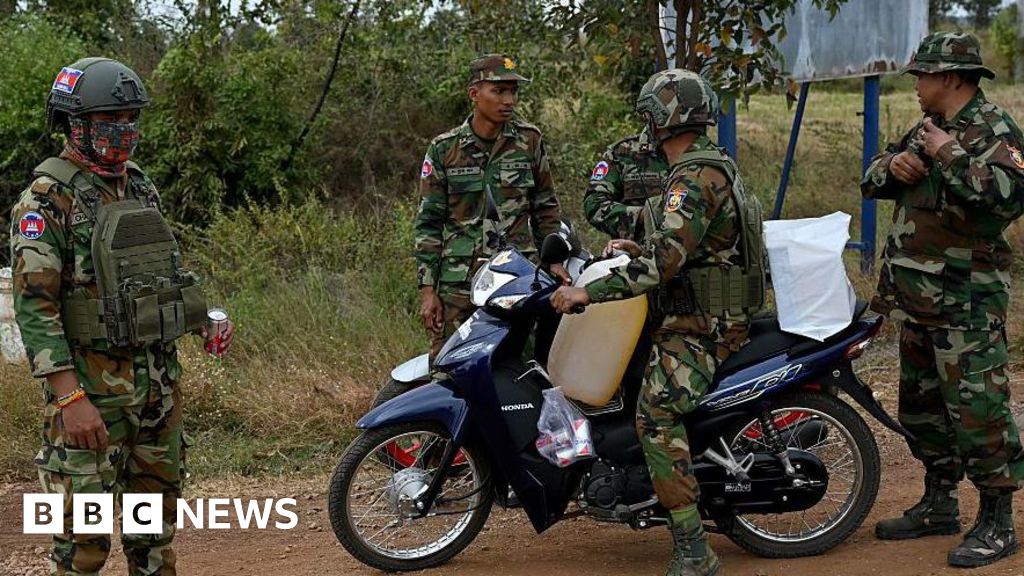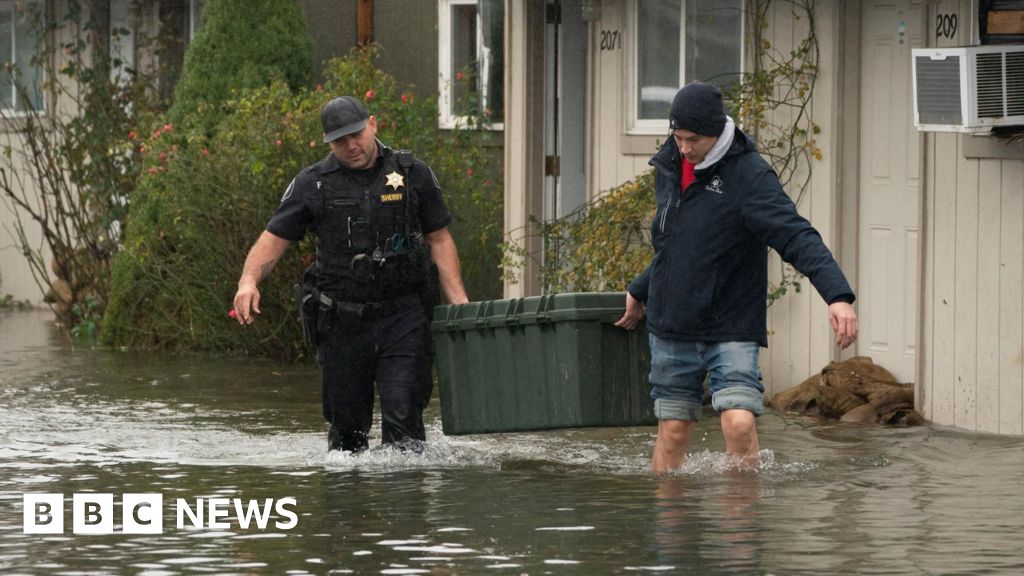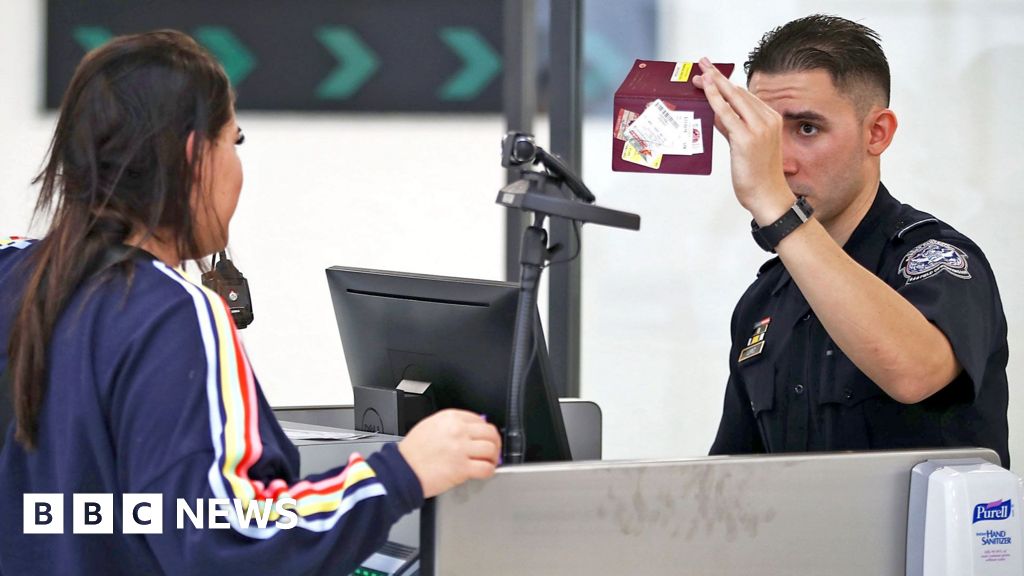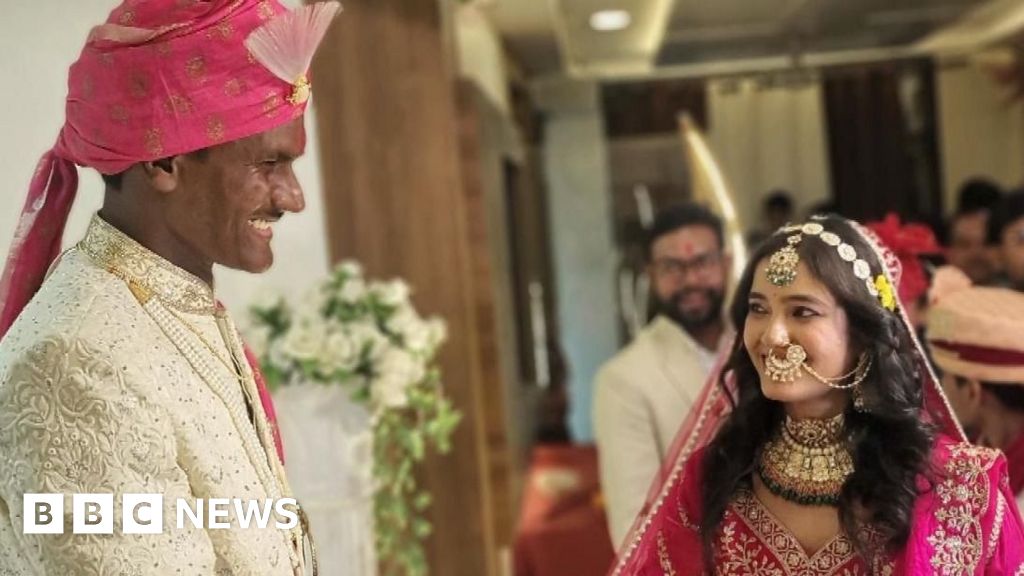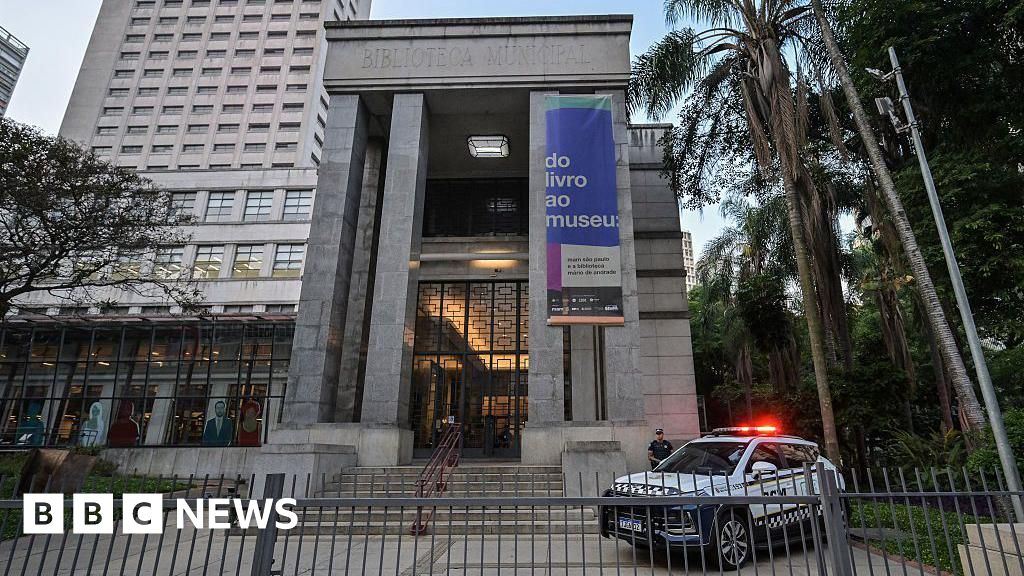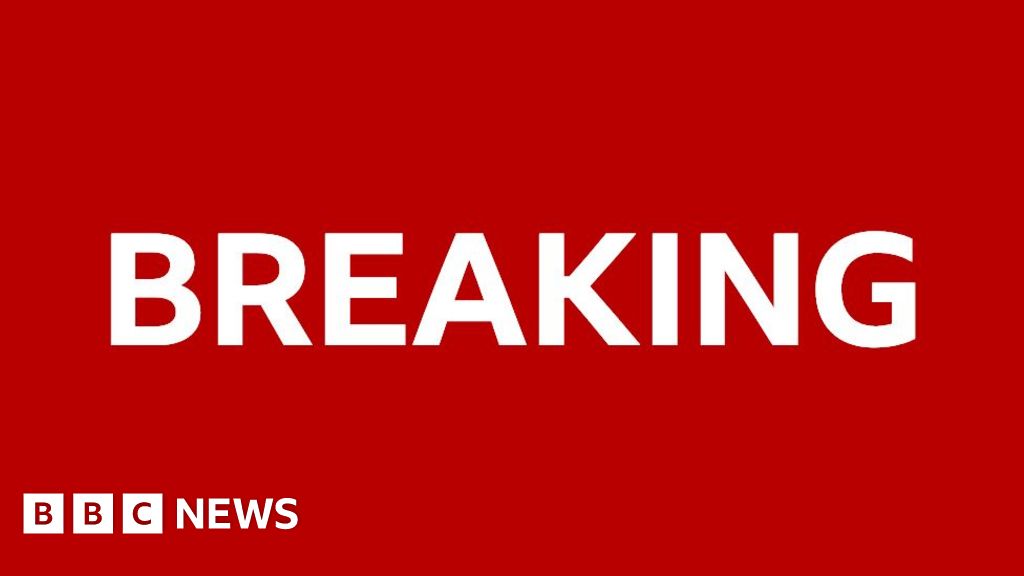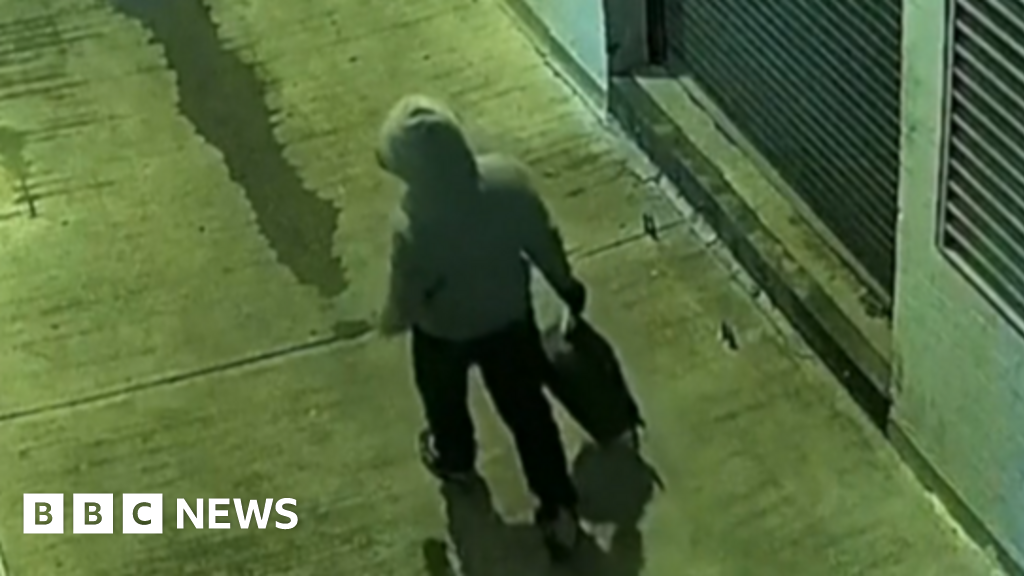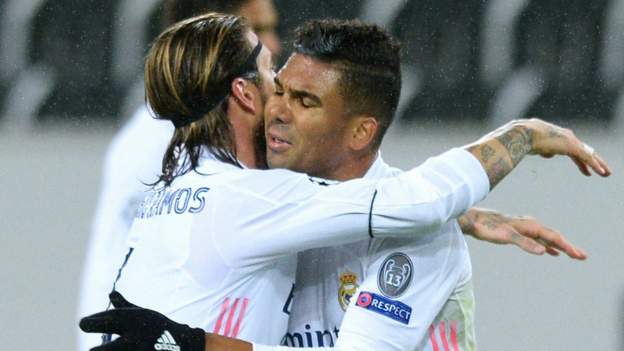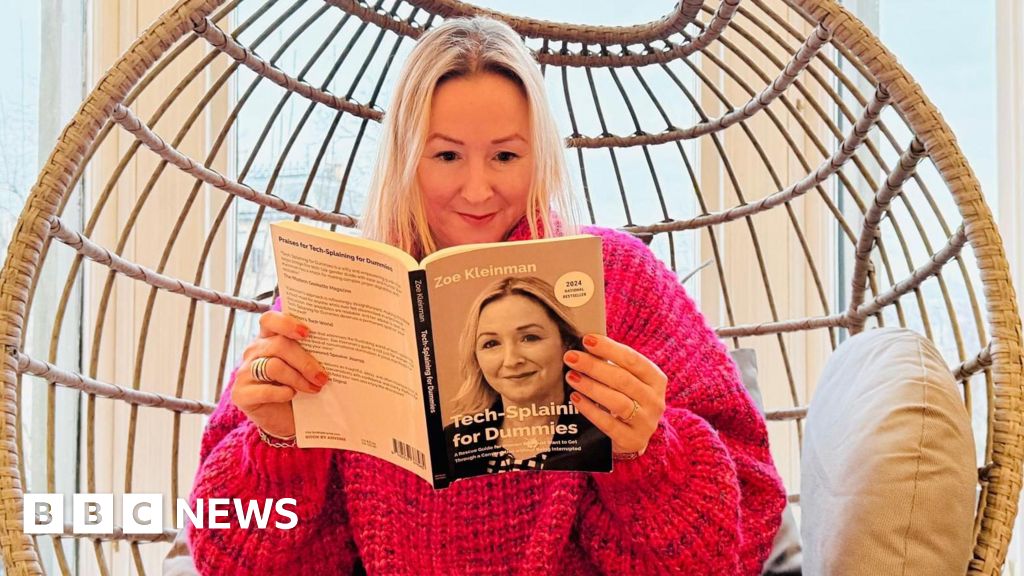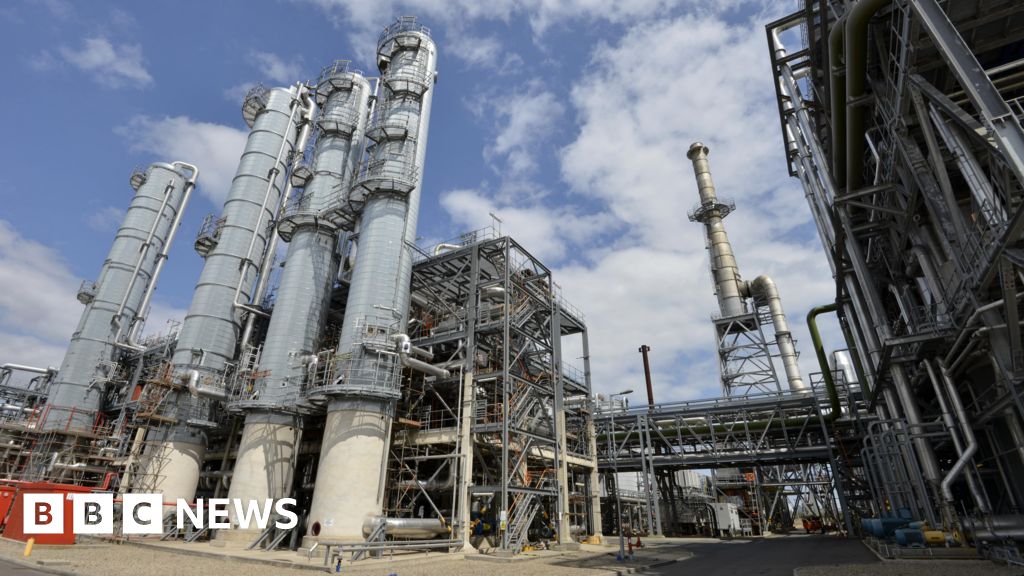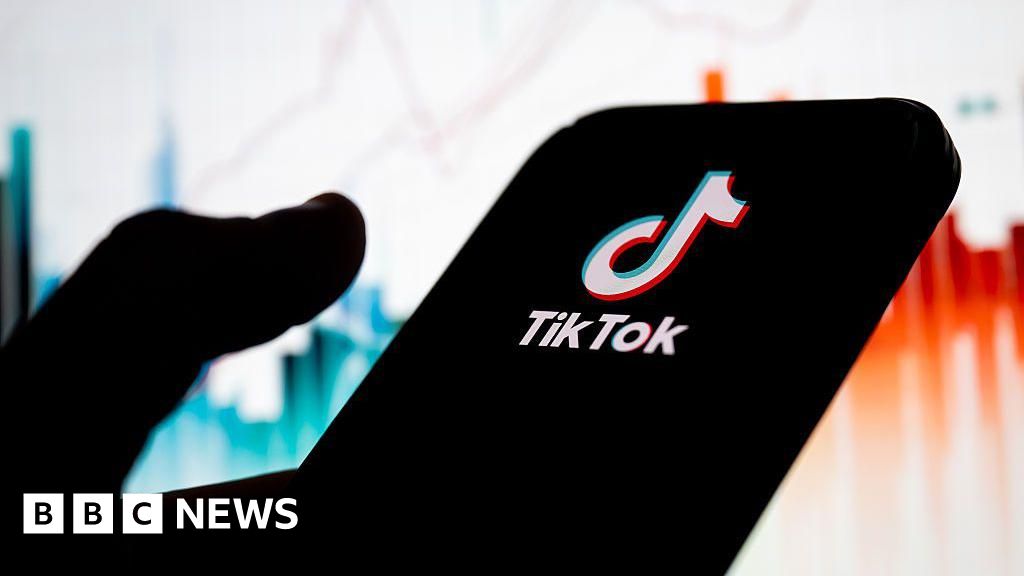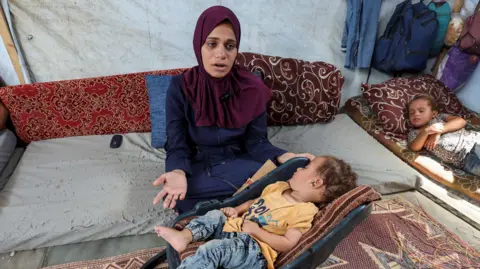 Reuters
ReutersUN agencies and local health officials in the Gaza Strip are launching an ambitious campaign to vaccinate 640,000 children against polio.
The rollout relies on a series of localised pauses in fighting between Israeli forces and Hamas fighters, with the first window set to begin on Sunday.
To be effective, the World Health Organization (WHO) says at least 90% of children under 10 must be immunised in a short time frame.
It follows the discovery of the first confirmed case of polio in 25 years in Gaza, with a UN expert saying more children are likely to be infected and that there could be a wider regional outbreak if the virus is not dealt with.
A video shot a few months ago shows that baby Abdulrahman Abu Judyan was crawling early. But now as he turns one, his mother Niveen – who lives in a crowded tent camp in central Gaza – worries that he will never be able to walk.
“It was very shocking,” Niveen tells the BBC, recalling her son’s recent diagnosis with polio, which has left him partly paralysed in one leg. “I wasn’t expecting this. Now he may not be able to crawl or walk and the child was left without proper medical care.”
On 7 October – the day of a shocking Hamas-led attack on southern Israel which killed 1,200 people – newborn Abdulrahman was supposed to receive routine vaccinations but never did.
During the war that followed, the Abu Judyan family from the very north of Gaza, have moved five times – first to Gaza City, then to different locations in the centre, to Rafah in the far south and back to Deir al-Balah.
About 90% of all Gazans have been displaced and with health services under huge strain, most children have seen their regular immunisations disrupted leaving them vulnerable to infection, like Abdulrahman.
“I feel a lot of guilt that he didn’t get the vaccination. But I couldn’t give it to him because of our circumstances,” Niveen says as she rocks her baby in a car seat. She desperately hopes that her son can be taken outside Gaza for treatment. “He wants to live and walk like other children,” she says.
The mother struggles to find clean drinking water for her nine children. Close to the makeshift tent where they live, raw sewage flows through the street.
Conditions are ideal for the spread of diseases – especially polio which is highly infectious.
Since discovering the virus in wastewater samples taken in June, UN agencies have been racing to set up an emergency mass vaccination programme.
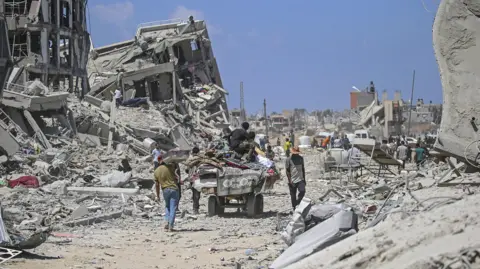 EPA
EPAAround 1.3 million doses of the vaccine were recently brought in through the Kerem Shalom checkpoint by Unicef – the UN’s children’s agency. It has had to keep them in cold storage in its warehouse at the correct temperature to maintain their potency. Another shipment of 400,000 doses is set to be delivered to Gaza soon.
On Thursday, the WHO said that it had reached an agreement with Israel for limited pauses in the fighting to allow the polio vaccination programme to take place, starting in central Gaza but then spreading to the south and north. Each “humanitarian pause” is set to last from 06:00 until 15:00 local time over three days, with the possibility of adding an extra day if needed.
Unicef’s Jonathan Crickx says it is crucial that these temporary truces hold.
“You cannot lead and implement a polio vaccination campaign in an active combat zone. It’s simply impossible,” he says.
“Families need to be feeling safe in bringing their children to get the vaccines. But also, the healthcare workers need to be able to safely reach the communities.”
“This is a huge endeavour,” Mr Crickx adds. “Especially in a place like the Gaza Strip where we know that, for example, roads have been damaged, that access is problematic, that security incidents take place on a daily basis.”
More than 2,000 workers – mostly locals – are involved in the immunisation effort. Palestinian health officials say there will be more than 400 fixed vaccination sites – which include healthcare centres, hospitals, clinics, and field hospitals – and about 230 so-called outreach sites, community gathering places, where vaccines will be distributed.
Each child must receive two drops of oral polio vaccine in two rounds, the second to be administered four weeks after the first. It is essential that the programme is carried out quickly to prevent mutation of the virus and break transmission.
The polio variant that triggered this latest outbreak is itself a mutated virus from an oral polio vaccine. This is because the vaccine contains a weakened live virus which in very rare cases is shed by those who receive it and can then evolve into a new form that can start new epidemics.
With doctors in Gaza on high alert for potential polio infections in children, tests are being carried out at a WHO-approved laboratory in Jordan.
“There could be more cases of paralytic polio until this outbreak is stopped and this virus will paralyse more children,” Dr Hamid Jafari, WHO director of polio eradication for the eastern Mediterranean, tells me from Amman.
He says the stakes are high for the whole region. “The risk of course, is not only just for Gaza, given the high force of transmission in Gaza, there is a risk of this spilling over into Israel, into the West Bank and surrounding countries.”
For now, though the focus remains on Gaza – where children make up nearly half of the 2.3 million population.
The past year has deprived many of their loved ones, their homes and health. With no end in sight to the war, the hope is that at least one new source of suffering can be eliminated.
